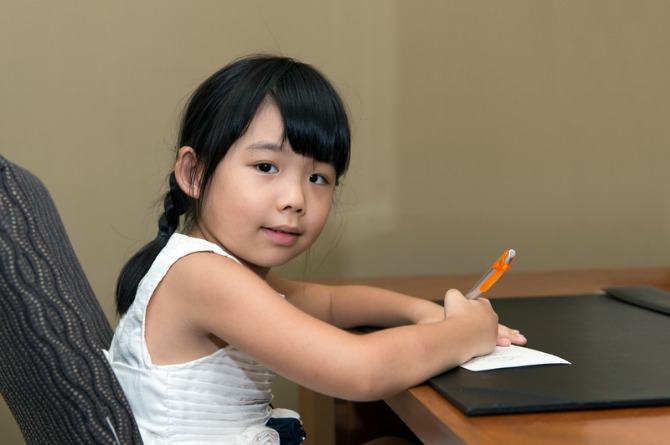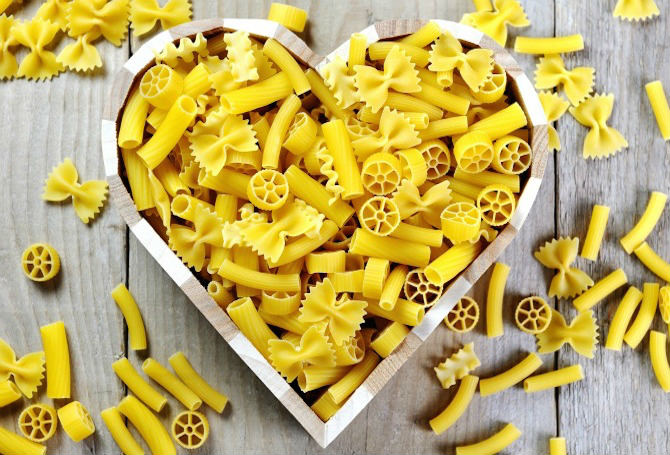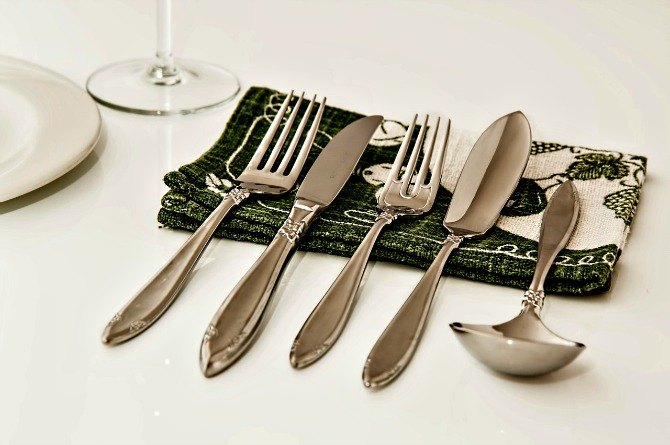Fine motor skills activities for preschoolers you can try with your child while at home!
Our motor abilities enable us to carry out our daily tasks and motions. Children need to learn these skills in order to grow.
Fine motor skills require a high degree of control and precision and the use of the tiny muscles in the hand or wrist (such as using a fork or crayon).
Gross motor skills make use of the massive muscles in the body to enable balance, coordination, response time, and physical strength so that people may accomplish greater motions like walking, running, and jumping.

Photo by Mikhail Nilov
Fine motor activities for preschoolers: Fine motor skills activities
Fine motor skills are what your preschooler uses to move the smaller muscles in his hands and fingers.
Your little one needs these for activities that require hand-eye coordination, such as writing, playing with small objects, and for taking care of his daily needs through dressing and feeding himself.
Mastering control of his body and movements boosts your child’s confidence in himself, his actions, and the world around him. It sets a good foundation for healthy cognitive, social, and emotional development.
Also, refining motor movements help your child become independent in caring for himself. It also builds on his natural curiosity about everyday activities.

Good fine motor skills allow your child to form an effective pencil grasp, which is crucial to have clear handwriting.
Fine motor activities for preschoolers: Building fine motor skills
The preschool period is a critical time for building and refining motor skills. Once this window has passed, it becomes more challenging to gain these skills. That’s why it’s important to keep track of your toddler’s gross motor skills activities milestones.
To help him develop these, provide your child plenty of freedom and opportunities to practice and repeat different types of movements through fine motor activities for preschoolers.
Toddler fine motor skills activities
1. Scooping Rice
Materials needed:
Two small bowls, uncooked rice, and a spoon.
What to do:
Place the bowls side by side, and fill one with uncooked rice. Give your child a spoon then ask him to scoop the rice grains into the empty bowl.
Create a challenge by using:
- Different grains–barley, lentils, or anything else you have available
- Different sized bowls
- A smaller spoon to really work on his coordination
For an advanced challenge, have him move cotton balls using chopsticks.
2. Fine motor skills activities: Threading Pasta
Materials needed:
A handful of penne, sticky tape, and a piece of string.
Optional items: paper towels, hand sanitizer, resealable bags, and food coloring.
What to do:
Tape one end of the string to a flat surface. Then, have him thread the pasta through the free end.
(Tip: Wrap some tape around the free end of the string to make the threading process smoother for little hands.)
Once he’s done, help him tie the two ends of the string together. Ta-dah!
For a creative challenge, have your little one put the pasta into a sealable bag before threading. Squirt in some hand sanitizer and some food coloring. Seal the bag and have him shake the pasta around until they become coated in color.
Spread the pasta onto paper towels to dry. Once dry, your child can start threading!

3. Toddler motor skills activities: Cardboard Cutting
Materials needed:
Used cereal or snack boxes and a pair of scissors.
What to do:
Cut rectangular strips of cardboard, long enough for your child to hold comfortably. Give him child-sized scissors and have him cut the strips in any way he wants.
To really get those little finger muscles working, draw lines on the cardboards for him to cut along. Have him save the cuttings for a future art project.
For a more advanced activity, draw different shapes on the cardboard and have your child cut them.
4. Pouring
Materials needed:
A child-sized jug, water, a small tray, cups, and a permanent marker.
What to do:
Your child is often eager to do everyday tasks for himself. Tap into this by placing the jug of water and a cup on a tray. Have your little one pour himself a drink.
To step it up, mark a line on the cup so he knows where he should pour. You may also use several cups.
Fire up his imagination while he pours by pretending he’s at a party!
5. Opening and Closing Containers
Materials needed:
Used plastic jars and boxes or bottles.
What to do:
By having a variety of containers to remove and return, you’ll give your child plenty of opportunities to practice and refine his skills.
For a fun extension, mix up the lids and have him match them to the right container. Or add a little scent inside to stimulate his senses!
6. Setting the Table
Materials needed:
A sheet of paper, a pen (for drawing an outline of a proper table setting); and your child’s plate, cup, and eating utensils.
What to do:
Make mealtimes more interactive by inviting your little one to set his own place at the table. To get him started, use a sheet of paper with an outline of where his plate, cup, and eating utensils are placed.
Encourage him to match his items to the outline.
Once he gets the hang of it, test out his skills by having him set the table on his own!

7. Fine motor skills activities: Sorting Cutlery
Materials needed:
Several forks and spoons.
What to do:
Keep children’s interest in tableware by jumbling up the cutlery in a pile. Have your child place the forks and spoons into separate piles. When he’s done this, have him put the newly separated piles back in the drawers.
8. Pegging
Materials needed:
Some child-sized clothes pegs and a cardboard box.
What to do:
Prepare your preschooler for doing laundry with this activity. Grab a handful of pegs and begin by pegging around the edges of your box.
Have your little one open and close the pegs to his heart’s content. His fingers will get a good workout while he builds concentration, too!
9. Toddler motor skills activities: Buttoning a Shirt
Materials needed:
Your child’s shirts/blouses that have buttons.
What to do:
Lay the clothes flat on a table. Show your child how to do and undo buttons. Ask him to do the same.
Too easy? Give his little muscles a challenge by having clothes that have different sized buttons.
10. Folding Clothes
Materials needed:
A few of your child’s clothes.
What to do:
He’s buttoned his clothes, and now it’s time to put them away! Lay out the tops on a table and show your little one how it’s done. Then, it’s his turn to fold his clothes and put them away. That’s laundry sorted for the day!
These simple fine motor activities for preschoolers are fun and engaging for young children. Best of all, you don’t need any fancy items–just a few things from around the house!
Gross motor skills activities
Gross motor skills, which are frequently wider and more powerful than fine motor skills, employ large muscular groups. These motions include walking, kicking, jumping, and climbing stairs. Eye-hand coordination is also required for certain gross motor milestones, such as throwing or catching a ball.
Toddler gross motor skills activities milestones

Photo by ShotPot
Here are some milestones in gross motor skills activities:
At this age, babies begin to move around. On a typical rollover, they start to shift from their back to their side. They will then start to completely roll over, starting from their back to their belly and subsequently moving from their belly to their back.
-
- Can raise arms and legs when lying on the stomach
- Can flip over
- while seated, one’s own head is supported.
-
Initially, your baby will sit with some support from you. They can then sit as long as they are resting on their hands. Once they have developed stronger back and abdominal muscles, infants will eventually be able to sit independently.
As your baby gains mobility, they will start to explore by rolling around on their stomach. Keep an eye on them as they squat and start to rock. Then, when you least expect it, they’ll start to crawl.
-
- Crawls
- lifts oneself from a seated to a standing position.
- does not use a cushion to sit
-
Every time your baby pulls themselves to a standing position, the muscles in their legs are exercised. Your infant will start to take a few tentative steps once they have adequate coordination and something to hold onto, such as a coffee table or your pants.
-
- Ascends stairs with help
- pulls or pushes toys with wheels
- walks with one hand raised
-
- Uses both feet at the same time to jump
- Runs rather stiffly on his toes
-
- Can pedal a bike without an assistance
- runs without falling
- Can toss a ball to a grownup
Toddler gross motor skills activities
Gross motor skills include the following:
- sitting
- walking
- running
- staning
- humping
- kicking
- lifting
There are also those skills that, well, call for a little bit more aptitude:
- riding a bicycle
- playing football or baseball
- swimming
As they exercise their gross motor skills, which also aid in balance, coordination, hand-eye coordination, and equilibrium, your child is fortifying the neural connections in their brain.
Gross motor skills toddler activities
Your new walker needs plenty of opportunities to practice even though it won’t be as rapid as strolling in the stroller. You may make this a safe space by childproofing your home and building a play enclosure. Give your child lots of time to explore when they are in a grassy environment, such as a park or playground.
While digging, scooping, pouring, and sorting may seem like basic play to you, your child is actually developing their gross motor skills.
-
Create an obstacle course
Your toddler should have to crawl, dodge, reach, climb, or even rearrange objects to get from one side of the room to the other if you arrange (safe!) objects in this way.
Other gross motor skills activities to improve their gross motor abilities include:
- skipping and hopping
- jump on a trampoline
- swimming
Delays in toddler gross motor skills activities milestones
Children with neurological impairments or developmental delays may have trouble with fine motor skills. The majority of the time, fine motor skill issues are not discovered until preschool, when it becomes more obvious that youngsters are struggling with certain scholastic activities, such as learning to replicate shapes or letters.
If your child isn’t reaching gross motor milestones, it could be easier to identify than fine motor ones. Children with gross motor delays may need modifications or assistive technologies for movement or athletics. Physical therapy could help them develop better gross motor skills.
Republished with permission from theAsianparent Singapore
Here at theAsianparent Philippines, it’s important for us to give information that is correct, significant, and timely. But this doesn’t serve as an alternative for medical advise or medical treatment. theAsianparent Philippines is not responsible to those that would choose to drink medicines based on information from our website. If you have any doubts, we recommend to consult your doctor for clearer information.